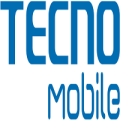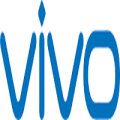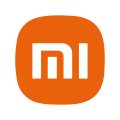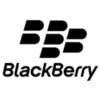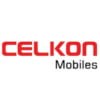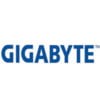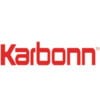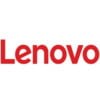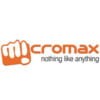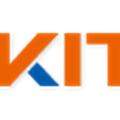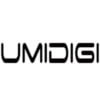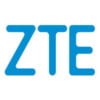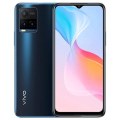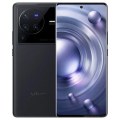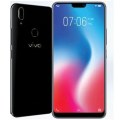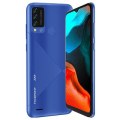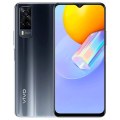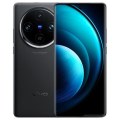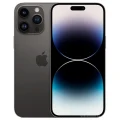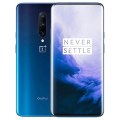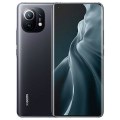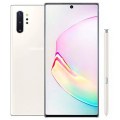- Awesome page
- Latest Mobile
- Smartphones
- Nothing phone 1
Nothing phone 1
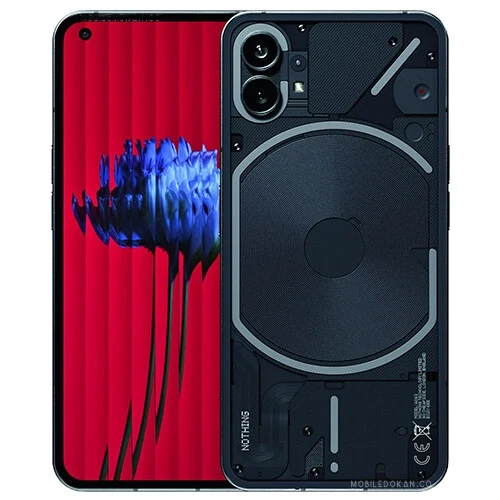

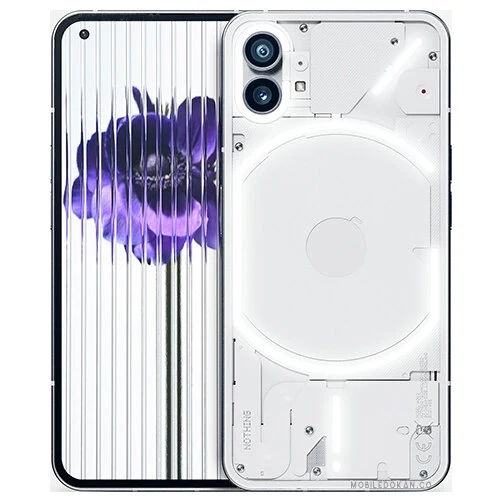

Nothing Phone 1 Price in Bangladesh
There are now two versions of the Nothing Phone 1 available: 128/256GB/8/12GB RAM. The price of the Nothing Phone (1) in Bangladesh is now 66990 taka. The 4500mAh battery of Phone 1 can be charged quickly with 33W. This gadget is powered by the Qualcomm SM7325-AE Snapdragon 778G+ 5G (6 nm) chipset and runs Android 12.
Pros
- Best build quality and design.
- Powerful battery with fast charging.
- Huge RAM and storage.
Cons
- FM is not supported.
Specifications
General
| Model | Nothing Phone 1 |
| Announced | 23 March, 2022 |
| Released | 16 July, 2022 |
| Status | Available |
| Official price | 12GB 256GB ৳66,990 |
| Unofficial price | 8GB 128GB ৳39,000 / 8GB 256GB ৳41,000 / 12GB 256GB ৳54,000 |
Design
| Dimensions | 159.2 x 75.8 x 8.3 mm (6.27 x 2.98 x 0.33 in) |
| Weight | 193.5 g (6.84 oz) |
| Colors |
White, Black |
Network
| Technology | GSM / HSPA / LTE / 5G |
| 2G Network |
GSM 850 / 900 / 1800 / 1900 - SIM 1 & SIM 2 |
| 3G Network |
HSDPA 800 / 850 / 900 / 1700(AWS) / 1800 / 1900 / 2100 |
| 4G Network | LTE |
| 5G Network |
SA/NSA |
| GPRS <strong>GPRS</strong> (General Packet Radio Service) is a packet oriented mobile data service on the 2G and 3G cellular communication system's global system for mobile communications (GSM), Generally, GPRS is used for the purpose of wireless data transfer, such as sharing pictures and videos or browsing the Internet via a mobile phone connection. | |
| EDGE <strong>EDGE</strong> (Enhanced Data GSM Environment) is a wireless network technology generally considered the next step in the 2G network offers data transfer rates up to four times faster than ordinary GSM networks, Generally, EDGE is used for the purpose of wireless data transfer, such as sharing pictures and videos or browsing the Internet via a mobile phone connection. | |
| Speed | HSPA 42.2/5.76 Mbps, LTE-A, 5G |
Display
| Display Type <strong>Display Technology => </strong> A number of display technologies and types used in mobile phones => TFT (Thin Film Transistor), IPS (In-Place Switching), OLED (Organic Light Emitting Diode), AMOLED (Active-Matrix Organic Light-Emitting Diode), Super AMOLED (an even advanced version of AMOLED), Resistive Touchscreen (Resistive touchscreens contain two layer of conductive material with a very small gap between them which acts as a resistance), Capacitive Touchsceen (Capacitive touchscreen technology consists of a layer of glass coated with a transparent conductor) | OLED capacitive touchscreen, 1B colors |
| Size | 6.55 inches, 103.6 cm2 (~85.8% screen-to-body ratio) |
| Resolution | 1080 x 2400 pixels, 20:9 ratio (~402 ppi density) |
| Features |
120Hz, HDR10+, 500 nits (typ), 1200 nits (peak) |
Camera
Main camera
| Camera Setup | Dual |
| Primary <strong>Camera</strong> is able to capture photographs and usually videos, The most important characteristics of a camera are the resolution (measured in megapixels), lens focus type (fixed or automatic), higher megapixel cameras are known to capture higher quality photos, but not always a good measurement of the photos quality. |
50 MP f/1.88, Wide Angle, Primary Camera, 50 MP f/2.2, Ultra-Wide Angle Camera |
| Features |
LED flash, panorama, HDR |
| Video | 4K@30fps, 1080p@30/60fps, gyro-EIS, live HDR |
Selfie camera
| Camera Setup | Single |
| Primary <strong>Camera</strong> is able to capture photographs and usually videos, The most important characteristics of a camera are the resolution (measured in megapixels), lens focus type (fixed or automatic), higher megapixel cameras are known to capture higher quality photos, but not always a good measurement of the photos quality. |
16 MP, f/2.5, (wide), 1/3.1&amp;amp;quot;, 1.0µm |
| Features |
Auto-HDR |
| Video | 1080p@30fps |
Hardware
| Chipset <strong>Chipset</strong> is a group of integrated circuits designed to perform one or a more dedicated functions, often with real time computing constraints, Popular smartphones are equipped with more advanced embedded chipsets that can do many different tasks depending on their programming. | Qualcomm SM7325-AE Snapdragon 778G+ 5G (6 nm) |
| CPU <strong>CPU</strong> (Central Processing Unit) mostly known as processors, CPU processes instructions in order to carry out certain functions that make your device operate properly. Processors are often described as the brain of computers, smartphones and tablets, Smartphones and tablets rely on processors to carry out their every task, Processors are an incredibly important factor in selecting any type of computing device, including your smartphone. | Octa-core (1x2.5 GHz Cortex-A78 & 3x2.4 GHz Cortex-A78 & 4x1.8 GHz Cortex-A55) |
| GPU <strong>GPU</strong> (Graphics Processing Unit) is a single-chip processor designed to rapidly manipulate and alter memory to accelerate the creation of images in a frame buffer intended for output to a display, This includes things such as lighting effects, object transformations, and 3D motion. | Adreno 642L |
| RAM (Memory) <strong>RAM</strong> (Random Access Memory) is a type of computer memory that can be accessed randomly, any byte of memory can be accessed without touching the preceding bytes that allows information to be stored and accessed quickly from random locations. RAM is the most common type of memory found in computer systems, smartphones, tablets and other electronic devices. | 8/12 GB |
| Internal Storage <strong>Internal Storage</strong> is a data storage space (flash memory) mostly used in smartphones, tablets and other electronic devices where operating system, apps, music, photos, videos, files and other user data Is stored. | 128/256 GB |
| Sensors <strong>Sensors</strong> are electronic components that detects and responds to some type of input from the physical environment. The specific input could be light, heat, motion, moisture, pressure and location, The output is generally a signal that is converted to use in computing systems, a location sensor, such as a GPS receiver is able to detect current location of your electronic device. |
Fingerprint (under display, optical), accelerometer, proximity, gyro, compass |
Connectivity
| Bluetooth <strong>Bluetooth</strong> is a wireless communications technology for exchanging data between mobile phones, headsets, computers and other network devices over short distances without wires, Bluetooth technology was primarily designed to support simple wireless networking of personal consumer devices. | 5.2, A2DP, LE |
| Infrared <strong>Infrared</strong> connectivity is an old wireless technology used to connect two electronic devices. It uses a beam of infrared light to transmit information and so requires direct line of sight and operates only at close range. | |
| USB | USB Type-C 2.0, USB On-The-Go |
| GPS <strong>GPS</strong> The Global Positioning System is a satellite-based radio navigation system, GPS permits users to determine their position, velocity and the time 24 hours a day, in all weather, anywhere in the world, In order to locate your position, your device or GPS receiver must have a clear view of the sky. | Yes, with A-GPS. Up to dual-band: GLONASS (1), BDS (2), GALILEO (1), QZSS (1) |
| NFC <strong>NFC</strong> (Near field communication) is a set of standards for smartphones and similar devices to establish peer-to-peer radio communications with each other by touching them together or bringing them into proximity, usually no more than a few inches. |
Battery
| Battery Type <strong>Battery Type => </strong> Cell phones run on various kinds of batteries depending on the manufacturer, phone size or shape and features. There are basically four types of cell phone batteries => Lithium Polymer, Lithium Ion, Nickel Metal Hydride and Nickel Cadmium. | Non-Removable Li-Po |
| Capacity <strong>Battery Capacity</strong> is a measure (typically in Amp-hr) of the charge stored by the battery, and is determined by the mass of active material contained in the battery. The battery capacity represents the maximum amount of energy that can be extracted from the battery under certain conditions. | 4500 mAh |
| Charging Charging | 33W wired, PD3.0, QC4, 50% in 30 min, 100% in 70 min (advertised) 15W wireless 5W reverse wireless |
Unveiling the Future: The Comprehensive Review of Nothing Phone 1 in Bangladesh
Introduction
When Carl Pei, co-founder of OnePlus, announced his new venture, Nothing, the tech world excitedly buzzed. The Nothing Phone 1 is the first product under this enigmatic brand, promising to redefine the smartphone experience. Designed for those who crave innovation, this device stands out in an ocean of smartphones. This blog post aims to provide an in-depth review of the Nothing Phone 1, focusing on its design, performance, and unique features to help Bangladeshi tech enthusiasts and smartphone users understand what makes this phone special.
Design and Build Quality
One of the most talked-about aspects of the Nothing Phone 1 is its design. Breaking away from traditional smartphone aesthetics, it boasts a sleek, minimalist look that attracts admiration at first glance. The transparent back reveals the phone’s inner workings, offering a glimpse into its sophisticated engineering. This is not just a device; it’s a piece of art.
The materials used in the Nothing Phone 1 emphasize durability. The phone features a robust aluminum frame coupled with Gorilla Glass on both the front and back, ensuring it can withstand daily wear and tear. The seamless blend of these materials gives it a premium feel, making it a joy to hold and use.
Standout design features include the “Glyph Interface,” a series of LED lights on the back that serve various functions like notifications and charging indicators. These LEDs add an extra layer of functionality and visual appeal, distinguishing the Nothing Phone 1 from other smartphones on the market.
Display and User Experience
The Nothing Phone 1 comes with a 6.55-inch OLED display, offering vibrant colors and deep blacks. The resolution of 2400 x 1080 pixels ensures that every image and video appears crisp and detailed. Whether you’re streaming your favorite movies or scrolling through social media, the display quality enhances every visual experience.
The user experience is further amplified by the phone’s responsiveness. The touchscreen is highly sensitive, making navigation smooth and intuitive. Thanks to a 120Hz refresh rate, actions like scrolling and swiping feel fluid, adding to the overall enjoyment of using the phone.
Additional features such as HDR10+ support and adaptive brightness significantly improve the user experience. These features ensure that the display adapts to various lighting conditions, providing optimal viewing experiences both indoors and outdoors.
Performance and Battery Life
Under the hood, the Nothing Phone 1 is powered by the Qualcomm Snapdragon 778G+ processor. This chipset ensures robust performance, allowing for seamless multitasking and efficient handling of demanding applications. Whether you’re gaming, editing videos, or running multiple apps simultaneously, the Nothing Phone 1 performs without a hitch.
Battery life is another crucial aspect where the Nothing Phone 1 excels. Equipped with a 4500mAh battery, the phone easily lasts a full day under normal usage conditions. Even with heavy use, such as extended gaming sessions or video playback, it manages to hold up quite well.
The phone also supports fast charging, with 33W wired and 15W wireless options. This means you can quickly top up your battery and get back to your activities without long waiting times. These performance optimizations contribute to a smooth and enjoyable user experience.
Camera Quality
The Nothing Phone 1 is equipped with a dual-camera setup on the rear, featuring a 50MP main sensor and a 50MP ultra-wide sensor. This configuration enables versatile photography options, capturing high-quality images with rich details and accurate colors. Whether you’re taking landscape shots or close-up portraits, the camera delivers impressive results.
Image and video quality are exceptional, thanks to advanced AI algorithms that enhance clarity and color accuracy. In low-light conditions, the camera performs admirably, producing clear and bright images without excessive noise. The Night Mode further improves low-light photography, making it easier to capture stunning shots in dim environments.
Additional camera features include 4K video recording, slow motion, and various shooting modes like panorama and portrait. These features allow users to experiment with different styles and techniques, enhancing the overall photography experience.
Software and Features
Running on a near-stock version of Android 12, the Nothing Phone 1 offers a clean and intuitive user interface. The lack of bloatware ensures a smooth and clutter-free experience, allowing users to focus on what matters most. The UI is designed to be straightforward, making it easy for users to navigate and customize their settings.
Unique software features include the “Glyph Interface” mentioned earlier, which integrates seamlessly with the operating system. Users can customize the LED lights for different notifications, adding a personal touch to their device. Additionally, the phone offers various customization options, enabling users to tailor their experience to their preferences.
Other functionalities that set the Nothing Phone 1 apart include advanced gesture controls, a customizable always-on display, and seamless integration with other Nothing ecosystem products. These features enhance the overall usability of the phone, making it a versatile tool for everyday use.
Connectivity and Storage Options
The Nothing Phone 1 offers a comprehensive range of connectivity options, ensuring users stay connected wherever they go. It supports 5G, Wi-Fi 6, Bluetooth 5.2, and NFC, providing fast and reliable connections for various applications. Whether you’re streaming high-definition content or transferring files, the phone delivers a seamless experience.
Storage options are equally impressive, with configurations available in 128GB and 256GB variants. While there is no expandable storage, the ample internal storage should suffice for most users. This allows you to store a vast amount of data, including apps, photos, videos, and documents, without worrying about running out of space.
Additional connectivity features include dual SIM support, enabling users to manage personal and work numbers on a single device. This flexibility is particularly useful for professionals who need to stay connected on multiple fronts.
Pricing and Value for Money
In terms of pricing, the Nothing Phone 1 offers excellent value for money for its features and specifications. Positioned as a mid-range device, it competes with higher-priced flagship phones by offering comparable or even superior features. In the Bangladeshi market, this makes it an attractive option for tech enthusiasts and smartphone users looking for high performance without breaking the bank.
Compared to other smartphones in its price range, the Nothing Phone 1 stands out with its unique design, advanced camera capabilities, and robust performance. These factors contribute to its overall value, making it a worthwhile investment for users seeking a premium experience at a reasonable price.
Additional factors that enhance the phone’s value include comprehensive warranty coverage and reliable customer support. These services ensure that users can enjoy their device with peace of mind, knowing that assistance is readily available if needed.
Pros and Cons
Summarizing the key strengths of the Nothing Phone 1, we find:
- Innovative Design: The transparent back and Glyph Interface set it apart from other smartphones.
- Robust Performance: The Snapdragon 778G+ processor ensures smooth multitasking and efficient performance.
- Impressive Camera: The dual-camera setup delivers high-quality images and videos, even in low-light conditions.
However, there are a few potential drawbacks to consider:
- No Expandable Storage: While the internal storage is ample, the lack of expandable storage may be a limitation for some users.
- Limited Availability: As a relatively new entrant in the market, the Nothing Phone 1 may have limited availability in certain regions.
- Average Battery Life: While sufficient for most users, power users may find the battery life slightly below their expectations.
Overall, the Nothing Phone 1 offers a balanced blend of innovation, performance, and value, making it a strong contender in the mid-range smartphone market.
Conclusion
In conclusion, the Nothing Phone 1 represents a bold step forward in the smartphone industry, offering a unique blend of design, performance, and innovative features. For tech enthusiasts and smartphone users in Bangladesh, it presents an exciting option that stands out from the crowd.
The sleek design, robust performance, and advanced camera capabilities make it a compelling choice for those seeking a premium experience at a reasonable price. While there are a few minor drawbacks, the overall value and unique features of the Nothing Phone 1 make it a worthwhile investment.
As the smartphone market continues to evolve, the Nothing Phone 1 sets a new standard for what users can expect from their devices. Whether you’re a tech enthusiast, a professional, or simply someone who appreciates good design and performance, the Nothing Phone 1 is a phone that deserves your attention.














